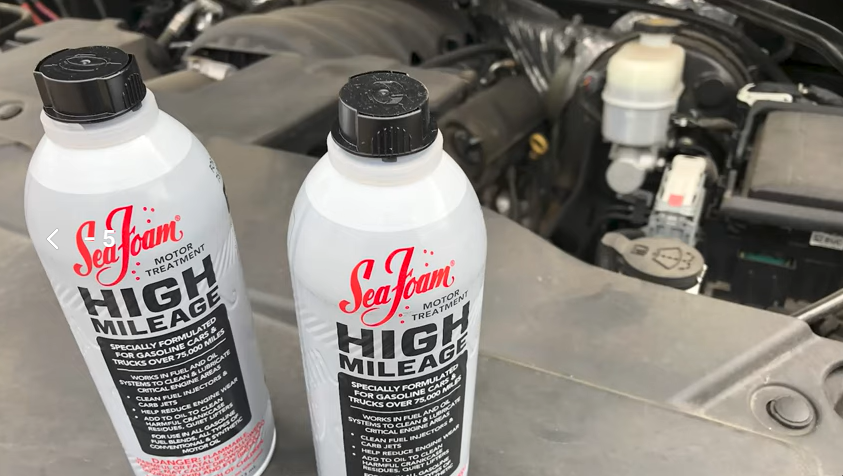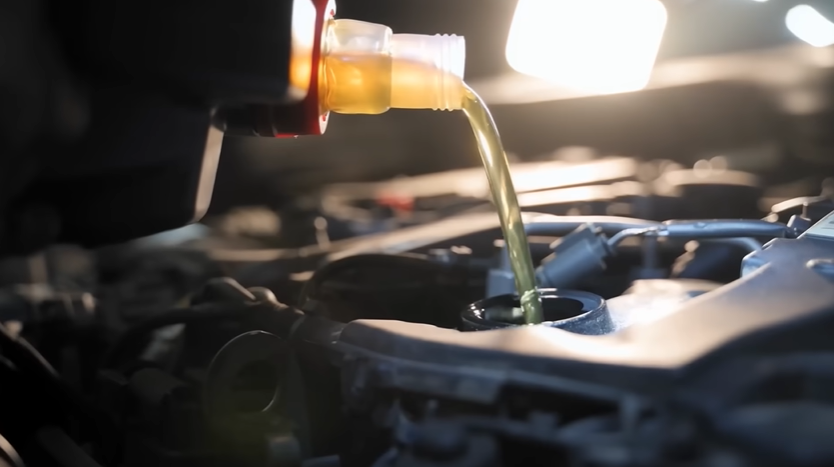You can use Seafoam before or after an oil change. It is typically added to the gas tank, but can also be added to the oil. If you add it to the oil, be sure to do so before changing the oil so that the old oil can carry away any debris.
If you’re wondering whether to use Seafoam before or after an oil change, the answer is both! This product is designed to clean and protect your engine, so using it before and after an oil change will help keep your engine in top condition. Seafoam is a petroleum-based product that contains cleaners and lubricants.
It’s safe to use with all types of engines, including those with catalytic converters. To use Seafoam, add it to your fuel tank or pour it into your crankcase (the area where your oil resides).
Can I Put Sea Foam in My Oil After an Oil Change?
It is safe to add Sea Foam to your oil after an oil change. The product is designed to be added to the oil to clean and protect the engine. Sea Foam will not harm the oil or affect its performance.
How Do You Use Sea Foam before an Oil Change?
If you’re changing your own oil, Sea Foam is a product that can be added to your gas tank or crankcase to help clean and protect your engine. Here’s how to use it: First, add Sea Foam to your fuel tank.
For every gallon of gas, add 1 ounce of Sea Foam. If your tank is half full, add 2 ounces, etc. Then drive as usual.
The product will mix with the gasoline and start cleaning your fuel system as you drive. Next, add Sea Foam to your oil before changing it. For every quart of oil, add 1 ounce of Sea Foam.
So if you’re changing 5 quarts of oil, you would add 5 ounces of Sea Foam to the old oil before draining it out. This will help clean out any sludge or deposits in your engine before fresh oil goes in.
When Should I Use Sea Foam?
Sea Foam is a product that can be used in a number of different ways to help keep your car running smoothly. Here are some guidelines on when to use Sea Foam: -If you notice your car starting to run a little rough, or the fuel efficiency has gone down, you can add Sea Foam to the gas tank to help clean out the engine and restore lost power.
Just be sure not to overdo it – only add about 1/3 of a can for every 10 gallons of gas. -If you’re going to be storing your car for a while (more than 30 days), adding Sea Foam to the gas tank will help prevent corrosion and keep the engine fresh. Just add the entire can per 20 gallons of gas.
-To clean up oil sludge and build-up in the crankcase, remove the oil fill cap and pour in half a can of Sea Foam. Then drive around for 15 minutes before checking and topping off the oil level.
Can I Add Sea Foam to Oil And Gas at the Same Time?
Yes, you can add Sea Foam to oil and gas at the same time. Sea Foam is a petroleum-based product that is safe to use with both gasoline and diesel fuels. When adding Sea Foam to oil and gas, it is important to follow the dilution ratios on the product label.
For example, when adding one ounce of Sea Foam per gallon of gasoline, you would add two ounces of Sea Foam per gallon of oil.
Add Sea Foam to your oil crankcase – super easy!
How to Use Seafoam in Oil
If your car is starting to burn oil, or if you notice that your oil level is dropping faster than usual, it might be time to add some Seafoam to your oil. Seafoam is a petroleum-based product that helps clean and lubricate your engine. It’s easy to use, and it can make a big difference in the way your engine runs.
Here’s how to use seafoam in oil: 1. Check your owner’s manual to find out how much seafoam you should add to your oil. You don’t want to overdo it, so it’s important to follow the manufacturer’s recommendations.
2. Pour the seafoam into the oil fill hole on the side of your engine block. If you’re not sure where this is, consult your owner’s manual or ask a mechanic. 3. Start the engine and let it run for a few minutes so that the seafoam can work its way through the system.
Then shut off the engine and let it sit for 30 minutes to allow the seafoam to do its job. 4. After 30 minutes, start up the engine again and let it run until it reaches operating temperature. This will help ensure that all of the seafoam has been burned off and doesn’t end up clogging anything up.

Seafoam in Oil: How Long to Leave It
If you’ve been wondering how long to leave seafoam in oil, the answer is quite simple. For best results, it’s recommended that you leave the product in your engine for at least 20 minutes. This will give the seafoam plenty of time to work its way through the system and clean out any build-up or deposits that may be causing problems.
How Much Seafoam in Oil
Seafoam is an effective product for cleaning and maintaining your car engine. It is safe to use and will not damage your engine parts. However, like any other cleaner, you should follow the manufacturer’s directions on how to use it.
One question that often comes up is how much seafoam to add to oil. The amount of seafoam you add to your oil depends on the size of your engine. For a small engine, you only need to add 1 ounce of Seafoam per quart of oil.
For a medium-sized engine, you can add 2 ounces of Seafoam per quart of oil. And for a large engine, you should add 4 ounces of Seafoam per quart of oil. Be sure to mix the seafoam thoroughly with the oil before adding it to your engine.
Seafoam in Oil before Oil Change
If you’re a car owner, you’ve probably heard of the term “seafoam.” But what is it? And more importantly, should you use it in your car?
Seafoam is a petroleum-based product that has been around for many years. Its purpose is to clean and lubricate engine parts. Many mechanics will add seafoam to an oil change as a preventative measure against sludge build-up.
So, should you use seafoam in your car? The answer may surprise you. While there are some benefits to using seafoam, there are also some potential risks.
Let’s take a closer look at both sides of the argument. The Pros of Using Seafoam in Your Car: 1. It can help clean out your engine.
Over time, engines can start to accumulate gunk and grime. This can lead to decreased performance and increased wear and tear on engine components. Adding seafoam to your oil change can help remove this build-up and restore peak performance.
2. It can extend the life of your engine oil. By keeping your engine clean, seafoam can actually help prolong the life of your motor oil. This means you won’t have to change your oil as often – saving you money in the long run!
3 .It can improve fuel economy. If your engine is run efficiently,yly u’ll likely see an improvement in gas mileage. Even a small increase can add up over time, so this is definitely a worthwhile benefit!
Conclusion
If you’re wondering whether you should use Seafoam before or after an oil change, the answer is that it doesn’t really matter. Seafoam is a cleaner and lubricant that can help clean up your engine and keep it running smoothly. It’s safe to use with all typesoilsl sos,,o that you can use it either before or after your oil change.




Leave a Reply